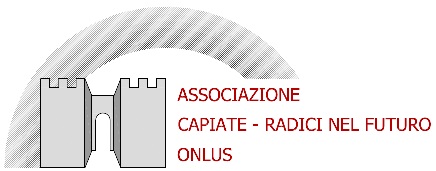|
In the Early Middle Ages Capiate was already an important agricultural
settlement. Moreover, the political authorities were located in the
Castle. The near village of Villa Capiate – nowadays called Villa San
Carlo - was the place where people lived.
Caromano is placed between the two localities mentioned above. Probably,
its name comes from the Lombard word Harimann which means "free
man/warrior". Likely there was an Arimannia, a guard-house with a
commander charged to control the road to Capiate.
This layout dates from the beginnings of Lombard Times, when Lombard
warriors settled near the richest and most productive villages and
dictated their domination on Roman-Byzantine peasants, who was imposed
to pay tributes.
In Lombard Times Capiate and Caromano were authorities locations, while
subdued people lived in Villa Capiate. These three places are physically
separated by the Greghentino creek: Capiate and Caromano are situated on
the southern side, Villa Capiate is on the northern one. Nevertheless,
during all the Middle Ages they represented the different urban-social
segments of the same community.
The medieval commune of Capiate included also Villa Capiate, Caromano
and Carsaga, although documents date from that period don’t quote such
administrative union clearly. Anyway, the strong link among these
villages lasted until the second half of the fourteenth century, when
D'Adda family bought several lands in Capiate surroundings. So Capiate
and Caromano began to gravitate towards Olginate, the greatest
possession of the D’Adda that would be become their feud about a
century later.
|
